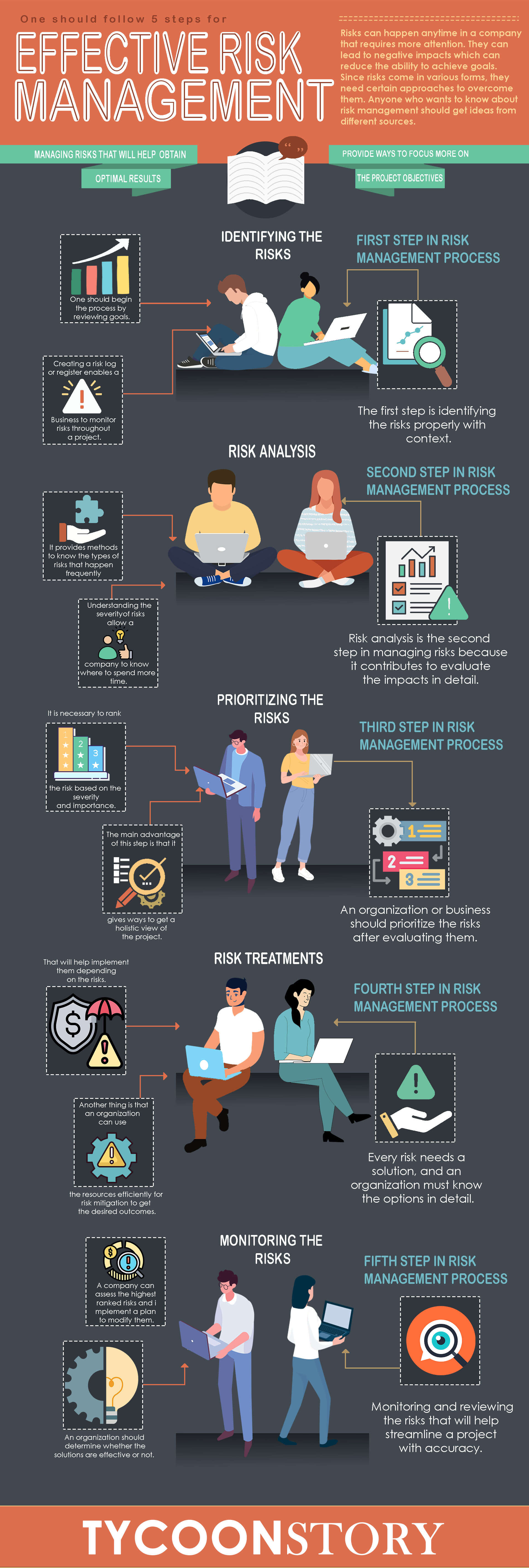Risks can happen anytime in a company that requires more attention. They can lead to negative impacts which can reduce the ability to achieve goals. Since risks come in various forms, they need certain approaches to overcome them. Anyone who wants to know about risk management should get ideas from different sources. One should follow 5 steps for managing risks that will help obtain optimal results. Apart from that, they provide ways to focus more on the objectives of a project with ease.
What are the 5 steps to an effective risk management process?
1. Identifying the risks
The first step is identifying the risks properly with context. As risks involve different types, one should begin the process by reviewing goals. A business can utilize a risk breakdown structure that will help list out the risks and organize them accordingly. It allows an organization to visualize risks that might emerge while planning the tasks of a project. The risk environment is always changing and this step requires revisiting that will help get solutions. Creating a risk log or register enables a business to monitor risks throughout a project.
2. Risk analysis
Risk analysis is the second step in managing risks because it contributes to evaluate the impacts in detail. It involves assessing the link between the risks and different factors within a company. This is because some risks can affect the operations of a business significantly. On the other hand, this step requires manual paper works that will help map risks to different documents. Apart from that, it provides methods to know the types of risks that happen frequently and which are severe. Understanding the severity and frequency of risks allow a company to know where to spend more time.
3. Prioritizing the risks
An organization or business should prioritize the risks after evaluating them. It is necessary to rank the risk based on the severity and importance. The main advantage of this step is that it gives ways to get a holistic view of the project. Additionally, a company can pinpoint the areas in a business venture that require more focus. Most importantly, it helps identify the solutions for each risk. The low-level risks are easily solvable that don’t require any advice. However, high-level risks require upper management intervention that will help obtain optimal results.
4. Risk treatments
Every risk needs a solution, and an organization must know the options in detail. That will help implement them depending on the risks. Another thing is that an organization can use the resources efficiently for risk mitigation to get the desired outcomes. In this step, a company can assess the highest ranked risks and implement a plan to modify them. Moreover, it should consider setting up a formal process to encourage employees to implement a strategy across an organization. A company should consider organizing meetings to discuss the issues with everyone. At the same time, it should make sure that the techniques utilized are very effective.
5. Monitoring and reviewing the risks
The final step is monitoring and reviewing the risks that will help streamline a project with accuracy. On the other hand, it requires clear communication when monitoring ongoing potential threats. An organization should determine whether the solutions are effective or not. It can know the strategies followed by global business leaders that give ways to gain more advantages. Monitoring the risks provide methods to ensure continuity in a company that will help achieve optimal results. Moreover, a company can choose the strategies that can work well for its projects. Managing risks allows a company to act proactively in mitigating vulnerabilities and other potential threats.




